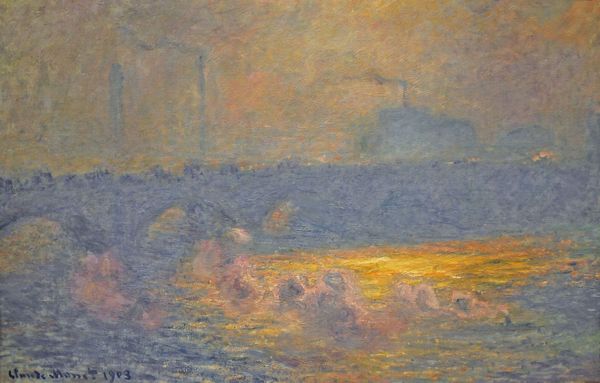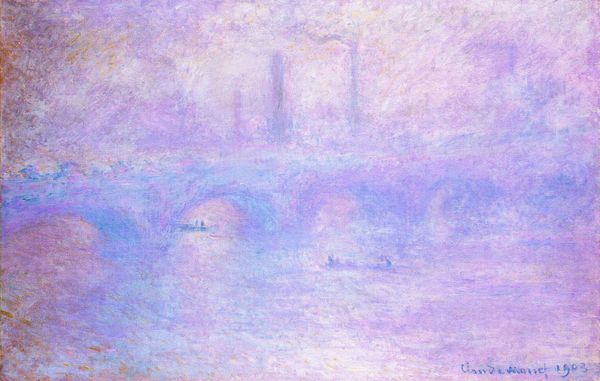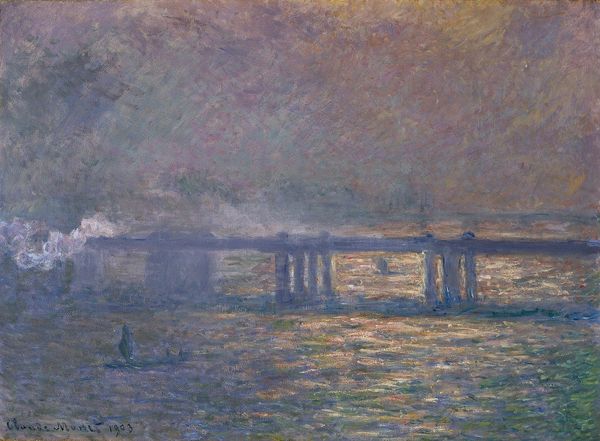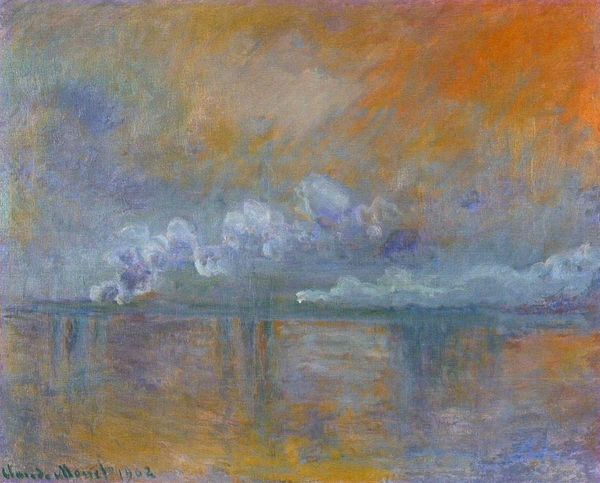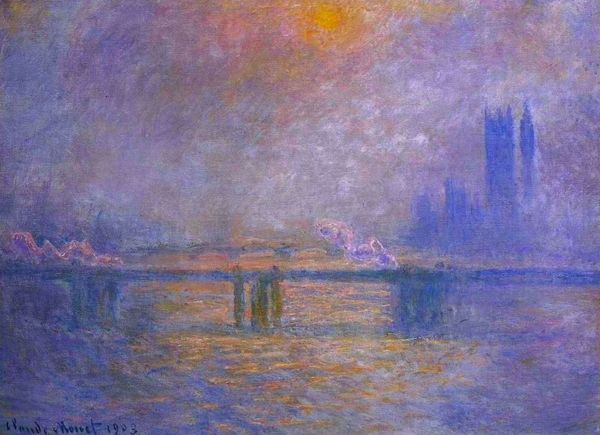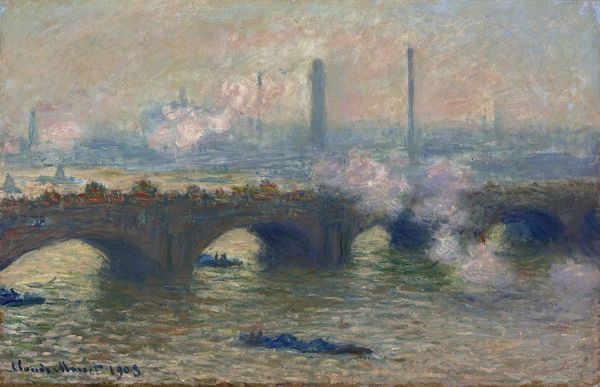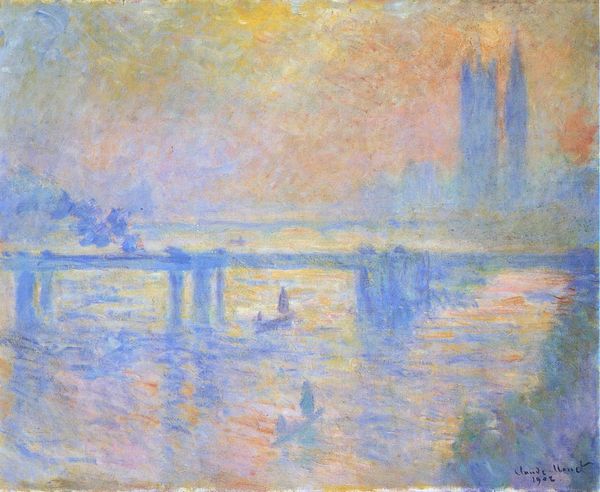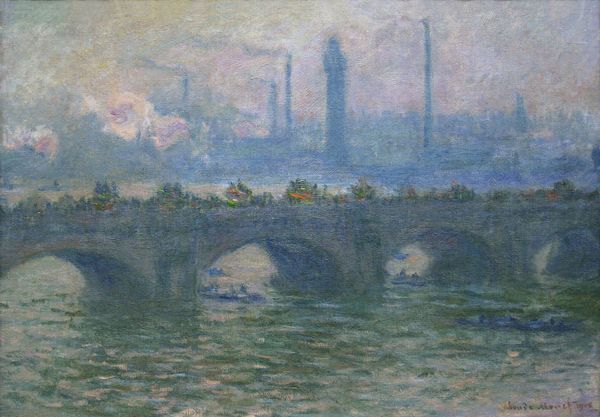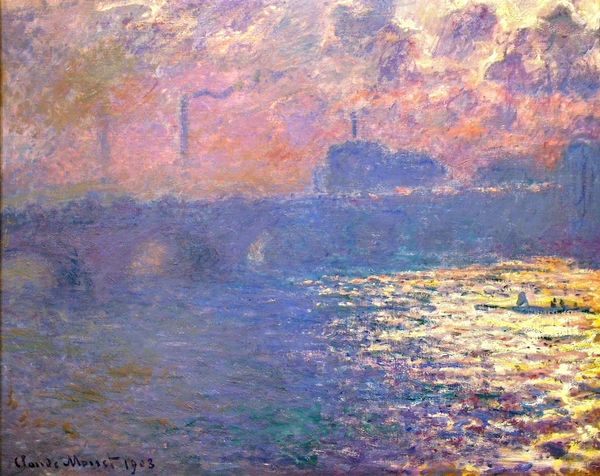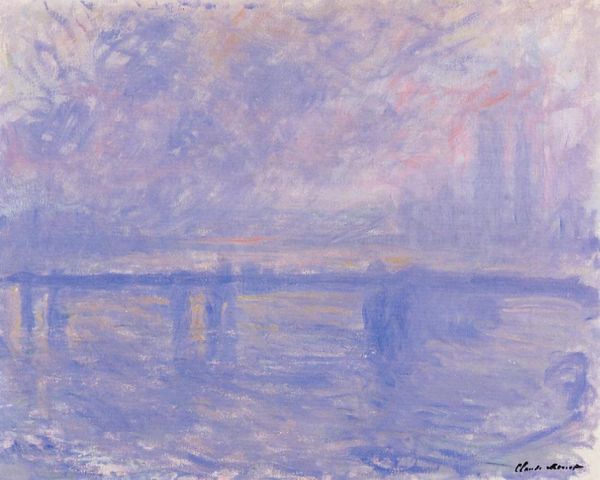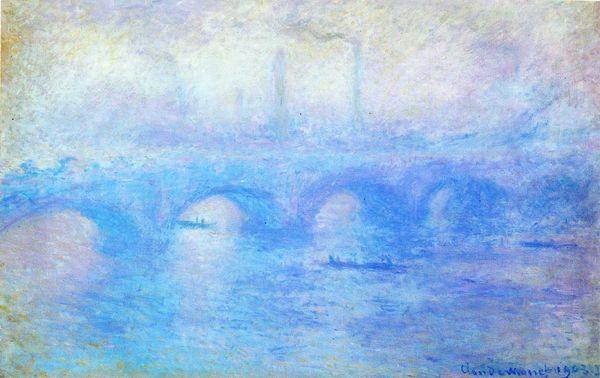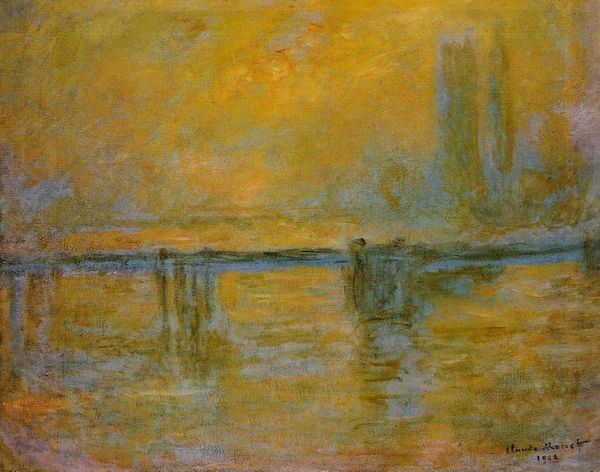
Copyright: Public domain
Editor: We are looking at Claude Monet's "Waterloo Bridge, Misty Morning" painted in 1901 with oils. It’s giving me a very melancholic, almost ghostly vibe with those smoky blues and purples. What do you see in this piece? Curator: More than just a landscape, Monet's painting offers a stark commentary on industrialization and its impact. Note how the bridge, a symbol of connection, is shrouded in mist, almost obscured by the pollution. Editor: So the haze isn't just about creating a certain mood, but also a direct reference to industrial pollution? Curator: Precisely! Consider the socio-political context: London in the early 20th century was the heart of the British Empire, fueled by coal-burning industries. Monet captures not just the beauty but the environmental cost of this progress. Doesn't it make you wonder whose lives were most affected by this pollution? Editor: Definitely the working class, living closest to the factories. The beauty almost feels like a disguise, hiding a darker reality. Curator: Exactly! Monet isn’t simply painting a scene; he's capturing a specific historical moment where industry, aesthetics, and social inequality intersect. We have to examine whose perspective is missing. Does Monet fully account for their lived experiences? Editor: It’s eye-opening to view Impressionism, which I always saw as focused on beauty and light, as potentially carrying these heavier social messages. Curator: Right. And by engaging critically with this art, we recognize the layers of meaning that connect artistic expression with the larger, often troubling, narratives of history. Editor: I’ll definitely look at Impressionism with a different lens now, thinking about its social and political dimensions. Thank you.
Comments
No comments
Be the first to comment and join the conversation on the ultimate creative platform.

